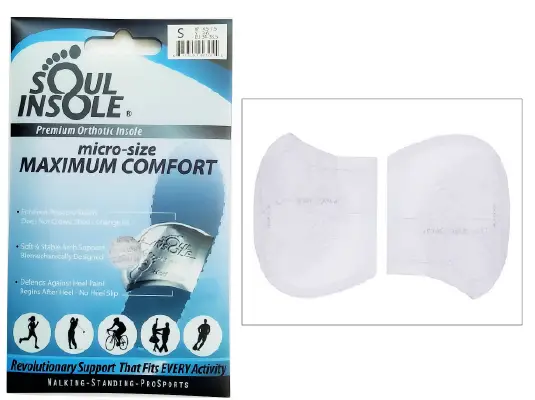Your foot is made up of bones, muscles, tendons, and ligaments. To find the origin of the name of this disorder, we must look at a specific area of the foot. At the base of your foot there is a ligament called the plantar fascia. The plantar fascia supports the arch of your foot, it is a strong, somewhat flexible, somewhat rigid, fibrous ligament of the lower part of the foot.
Attached to the heel bone, the plantar fascia runs the length of the foot to attach at the anterior end of the ball of the foot. When you walk, your full body weight is distributed across your feet. Any imbalance in foot mechanics and weight distribution has the potential to cause pain or injuries.
The name of inflammatory conditions ends in “itis”. This explains why the name of the disorder that refers to inflammation of the plantar fascia is plantar fasciitis.
We repetitively engage in motions that include activities such as walking or running to stretch the plantar fascia. Since the fascia is not very flexible, this stretching can cause small tears that lead to inflammation and pain. Factors that put extra pressure on the plantar fascia and heel include a raised or sagging arch and walking on an uneven surface.
A CLOSER LOOK AT PLANTAR FASCIITIS
Plantar fasciitis, AKA plantar aponeurosis or policeman’s heel is an injury caused by stretching or rupturing the fascia. The fascia, also called aponeurosis, is a membrane of fibrous tissue extending from the heel to the toes and maintaining the foot’s arch.
This is a widespread pain that can be remedied quite easily by wearing the correct foot orthotics or insoles. However, if left untreated, plantar fasciitis can develop into a chronic pain that can take much longer to fully recover.
An orthopedic doctor can diagnose musculoskeletal conditions, including plantar fasciitis, by evaluating your symptoms and medical history. Moreover, they’ll order diagnostic tests such as a foot X-ray or magnetic resonance imaging (MRI) to rule out other possible causes of foot pain and develop the best treatment plan for you.
SYMPTOMS OF PLANTAR FASCIITIS
Plantar fasciitis is manifested by the appearance of a few key symptoms. Here are the most common symptoms of plantar fasciitis:
- The appearance of sharp pain under the foot and in the heel, which intensifies when the foot is at rest after a long period
- Stiffness in the foot and ankle
- Slight swelling in the heel
- Tension on the outside of the foot
- Feeling of heat in the heel
- Feeling like you have a thorn in your heel
If you suffer from one of the symptoms of plantar fasciitis, the best thing is to make a diagnosis with a specialist in order to be certain that it is this disorder. Podiatrists, orthopedic surgeons, physical therapists, sports medicine doctors, and rheumatologists are well-suited to diagnose and treat plantar fasciitis. Moreover, a chiropractor in Flower Mound, TX or your area, can provide alternative treatments such as adjustments, soft tissue therapy, and advice on exercises to alleviate pain and promote healing.
PLANTAR FASCIITIS: CAUSES AND RISK FACTORS
There are many causes for the onset of plantar fasciitis. They can be triggered by several factors. Here are the main causes of plantar fasciitis as well as the different risk factors for this pathology:
- Practicing a sport without preparation and/or lack of rest between exercise phases
- The practice of certain sports that stimulate the feet a lot, such as running, skiing, tennis, etc.
- Wearing ill-fitting or poor-quality shoes
- Certain genetic predispositions, such as having flat or hollow feet or having inflammatory arthritis
- Pregnancy
- Obesity
While plantar fasciitis is a common condition and resolves with conservative treatments, potential complications may arise without proper management. Chronic plantar fasciitis may result in persistent and recurring pain in the foot, making it difficult to engage in regular activities or exercise, significantly impacting your quality of life.
To avoid pain and discomfort, individuals with plantar fasciitis may alter their walking or running gait. This condition contributes to additional stress and strain on other parts of the foot, potentially causing pain and discomfort in other areas such as the ankles, knees, hips, or lower back.
Overcompensation or changes in foot mechanics due to plantar fasciitis may lead to inflammation and irritation of other structures in the foot. Tendonitis (inflammation of tendons) or bursitis (inflammation of the fluid-filled sacs that cushion joints) may also occur, exacerbating pain and limiting mobility. Moreover, plantar fasciitis may also cause heel spur, which will be discussed below.
PLANTAR FASCIITIS AND HEEL SPUR
If plantar fasciitis remains untreated, this condition could lead to another problem: the formation of a heel spur (Lenoir’s spur).
A heel spur is a bony growth that forms where the fascia joins the heel bone. This growth forms to allow the bone to support the tension of the tendon. The foot with plantar fasciitis produces excess calcium, which eventually builds up to form the heel spur.
The pain felt does not come from the spine as such. Indeed, this pain is mainly caused by the contact of the spine with irritated aponeurosis. If no action is taken to treat heel spur or plantar fasciitis, lesions could form on the fascia.
Sometimes the heel spur is so pronounced that it can be felt through the skin. In this case, it is necessary to perform a surgical procedure for the removal of this growth.
THE TREATMENT OF PLANTAR FASCIITIS
Treatment for plantar fasciitis may involve wearing orthotics and orthopedic shoes.
Your condition may need to be analyzed by a doctor or foot specialist to determine its severity. You may require a foot orthoses, taking time off the feet to rest, icing, massage, vitamins or other treatment. The orthoses are designed to give your feet good support while waiting for their structure to strengthen. In certain cases, you may be given night orthoses in addition to wearing orthopedic shoes to relieve pain. These devices are the best treatment for plantar fasciitis.
In addition to orthotics, you may be required to perform a series of plantar fasciitis exercises regularly to release tension under the foot and speed up treatment and healing.
If conservative measures don’t provide relief, your doctor may administer corticosteroid injections to reduce inflammation and pain. Another treatment option includes extracorporeal shockwave therapy (ESWT), a non-invasive treatment that involves directing shockwaves to the affected area. It reduces foot pain and promotes healing. In rare cases, an orthopedic doctor may consider surgical options.
Effective treatments remedy plantar fasciitis and prevent the appearance of heel spurs. So, don’t hesitate to visit a foot expert, start doing foot exercises and start wearing orthopedic inserts and higher quality shoes.
AN EFFECTIVE DIY TREATMENT: THE SOUL INSOLE ORTHOPEDIC BUBBLE INSOLES
As a DIY treatment, you can easily make use of the Soul Insole Orthopedic Bubble Insoles. A set of highly effective memory gel insoles for Plantar Fasciitis, Pronation, and Heel Pain.
The soft memory gel adds alignment and support to reduce foot pain. Custom-designed to relieve conditions such as Plantar Fasciitis, Morton’s Neuroma, Fat Pad Atrophy, Metatarsalgia, Heel Pain, Overpronation, and more. Click here to get yours now!!
The Soul Insole Orthopedic Bubble Insoles’ key features include
A self-adhesive for easy application and compatibility with all shoe types. Durable: Washable and reusable, and gives no odor: These gel pads are made of non-porous, medical grade gel and will not smell, 100% Satisfaction or Money Back Guarantee!



